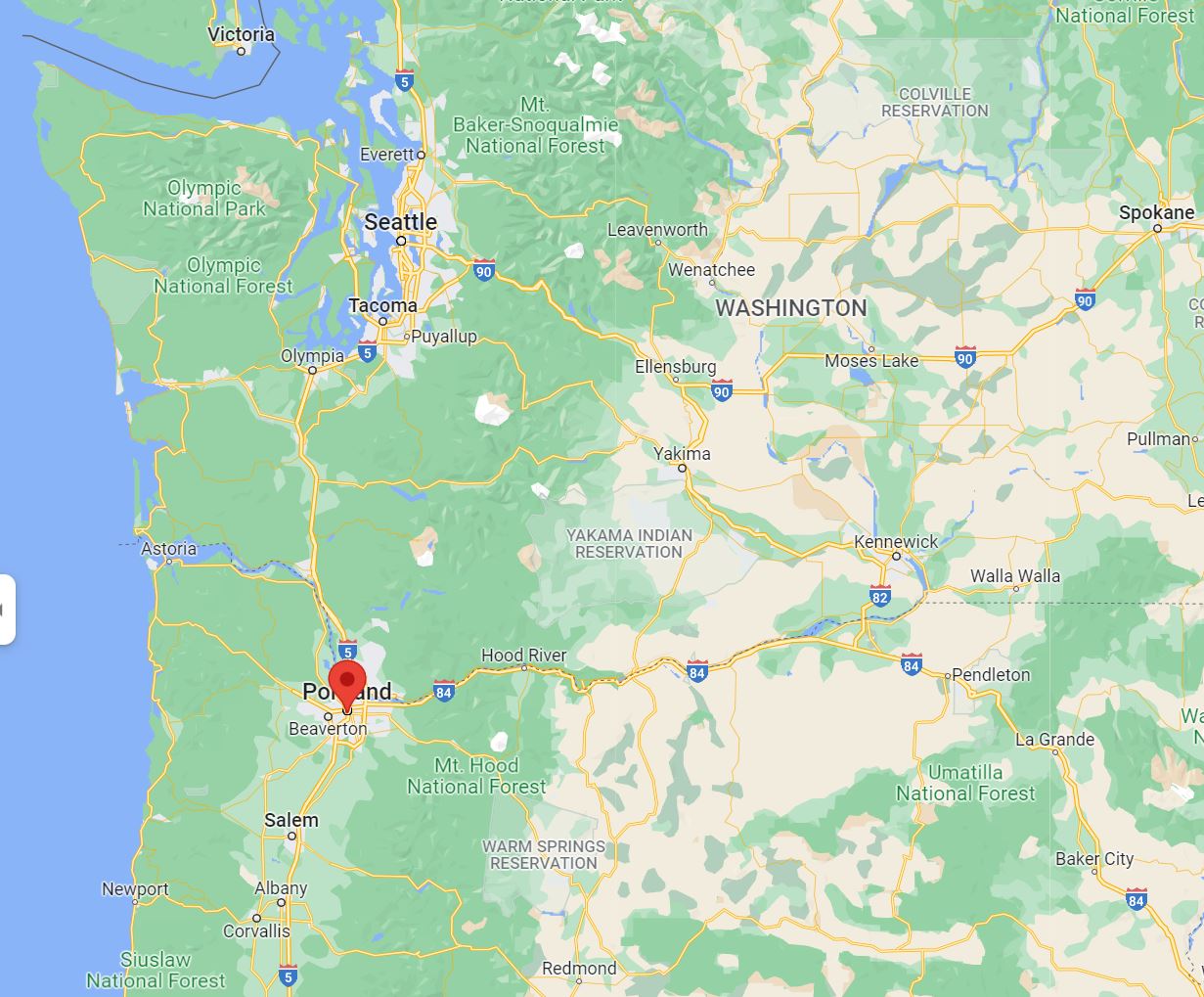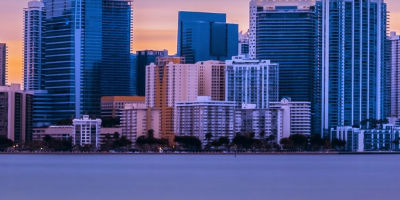Between Onalaska and Portland International Airport there are 87 miles, about an hour and a half by road. At that airport we had a great time. We ate very well and listened to good music.
Portland International Airport (IATA: PDX, ICAO: KPDX, FAA LID: PDX) is a joint civil–military airport and the largest airport in the U.S. state of Oregon, accounting for 90% of the state’s passenger air travel and more than 95% of its air cargo. It is within Portland‘s city limits just south of the Columbia River in Multnomah County, 6 miles (10 kilometers) by air and 12 mi (19 km) by highway northeast of downtown Portland. Portland International Airport is often referred to by its IATA airport code, PDX. The airport covers 3,000 acres (1,214 ha) of land.
Portland International Airport has direct flights and connections to most major airports throughout the United States, and non-stop international flights to Canada, Germany, Japan, Mexico, the Netherlands, South Korea and Iceland. The airport is a hub for Alaska Airlines. It is also has a maintenance facility for Alaska Air subsidiary Horizon Air. General aviation services are provided at PDX by Atlantic Aviation. The Oregon Air National Guard has a base on the southwest portion of the airport property grounds, and is also the host unit of the 142nd Fighter Wing (142 FW), which operates the F-15 Eagle. Local transportation includes the MAX Red Line light rail, which takes passengers between PDX and downtown Portland, as well as farther west to Beaverton. There is also Interstate 205, which connects to southwestern Washington (north from PDX) along with many suburbs of Portland (south from PDX).
PDX receives top honors among many polls: Travel + Leisure magazine 2013 readers’ poll for best US airport; Condé Nast Traveler in 2006, 2007, 2008, and 2010: top airport for business travelers; #1 in 2015, 2016, and 2019 by J.D. Power and Associates for U.S. “Large Passenger Airports” and overall highest amongst passenger satisfaction; the 2015 ALPA Airport of the Year.

Portland
Named after Portland, Maine, the Oregon settlement began to be populated in the 1830s, near the end of the Oregon Trail. Its water access provided convenient transportation of goods, and the timber industry was a major force in the city’s early economy. At the turn of the 20th century, the city had a reputation as one of the most dangerous port cities in the world, a hub for organized crime and racketeering. After the city’s economy experienced an industrial boom during World War II, its hard-edged reputation began to dissipate. Beginning in the 1960s, Portland became noted for its growing progressive political values, earning it a reputation as a bastion of counter-culture.
The city operates with a commission-based government, guided by a mayor and four commissioners, as well as Metro, the only directly elected metropolitan planning organization in the United States. Its climate is marked by warm, dry summers and cool, rainy winters. This climate is ideal for growing roses, and Portland has been called the “City of Roses” for over a century.
Jelly Pot
Emma Barret
Born March 25, 1897 in New Orleans, Louisiana. Her father was Capt. William B. Barrett, who she said fought for the North in the Civil War. At the age of 7 she began to play the piano. In the early 1920s, Barrett joined Oscar Celestin‘s Original Tuxedo Jazz Orchestra. In 1928, when the Celestin’s band split, she intermittently played music with Bebe Ridgeley’s Tuxedo Jazz Orchestra for the next 10 years.
In 1947, she accepted a steady job at Happy Landing, a local club in Pecaniere, Louisiana, but it was her recording debut in 1961, with her own album in the Riverside Records New Orleans: The Living Legends series, that brought her recognition. Although most of the songs on the album were instrumentals, others featured vocals by Barrett that the liner notes described as her first recordings as a vocalist.
She was nicknamed “Bell Gal” because she wore a red skull cap and garters with Christmas bells that jingled in time with her music. She was featured on the cover of Glamour magazine and written about in publications in the U.S. and Europe. She toured with the Preservation Hall Jazz Band domestically and internationally, including a stint at Disneyland in 1963.
Despite the popular exposure she received at concerts and overseas appearances, Barrett continued to feel most comfortable in her native New Orleans, especially the French Quarter. In 1963, on her album The Bell Gal and Her Dixieland Boys Music, Barrett sings on four of the eight songs and heads two overlapping groups. She is joined throughout by banjoist Emanuel Sayles, bassist Placide Adams, and drummer Paul Barbarin, and four songs feature trumpeter Alvin Alcorn, trombonist Jim Robinson and clarinetist Louis Cottrell, Jr.; the remaining four numbers have trumpeter Don Albert, trombonist Frog Joseph and clarinetist Raymond Burke.
Overall, this set gives listeners a good sampling of the sound of New Orleans jazz circa 1963 and is one of the few recordings of Barrett mostly without the regular members of what would become the Preservation Hall Jazz Band (Robinson and Sayles excepted). The ensemble-oriented renditions of such numbers as “Big Butter and Egg Man“, “Bogalusa Strut”, and “Take Me Out to the Ball Game“‘ are rendered with fun and joy.
The Preservation Hall Jazz Band made a brief appearance in the 1965 film The Cincinnati Kid, which featured Barrett as vocalist and pianist for the band and included a close-up of her.
In 1967, she suffered a stroke that paralyzed her left side, but she continued to work, and occasionally to record. She played music until her death in 1983 at the age of 85, she died at Metairie‘s Bonnabel Hospital.
The Stompers’
Index
xxxxxxxxxx On our way to Centralia
xxxxxxxxxx Shopping at Safeway
xxxxxxxxxx Holy Water
xxxxxxxxxx Flip Wilson’s routine
xxxxxxxxxx At Beverly’s
x
xxxxxxxxxx On our way to Snohomish
xxxxxxxxxx Marky’s home in Snohomish
xxxxxxxxxx How the Loshes found Bob
xxxxxxxxxx Making Cuban Coffee
xxxxxxxxxx Sharpening Marky’s knife
x
x
xxxxxxxxxx Helen, Georgia
xxxxxxxxxx German restaurant in Florida
xxxxxxxxxx Colonia Tovar in Venezuela
xxxxxxxxxx Chonchita’s home
x
xxxxxxxxxx Rosario Beach
xxxxxxxxxx Deception Pass
xxxxxxxxxx On our way to Coupeville
xxxxxxxxxx Visiting Coupeville
x
x
xxxxxxxxxx Lunch at Shary
xxxxxxxxxx At Sharon’s
xxxxxxxxxx At the Bower’s
xxxxxxxxxx Old photos from Deer Park
xxxxxxxxxx Dennis Basketball Team
xxxxxxxxxx Onalaska General Store
x
xxxxxxxxxx I ain’t gone give nobody
xxxxxxxxxxxxxxxnone of my jolly roll
xxxxxxxxxx Nena Marinelli’s version
xxxxxxxxxx Emma Barrett’s version
xxxxxxxxxx New Orleans
xxxxxxxxxxxxxxxStompers’ version
x
2018
x
x
xxxxxxxxxx Monroe Road
xxxxxxxxxx Wild Rose Cemetery
xxxxxxxxxx Loshes’ Old Home
xxxxxxxxxx Sunflower field I
xxxxxxxxxx Sunflower field II
xxxxxxxxxx Wheat field
x
xxxxxxxxxx Entering Deer Park
xxxxxxxxxx Driving around Deer Park
xxxxxxxxxx Main Street Deer Park
xxxxxxxxxx Deer Park Hish School
xxxxxxxxxx 1st. Street Restaurant
xxxxxxxxxx Shopping at Yoke’s
x
xxx


